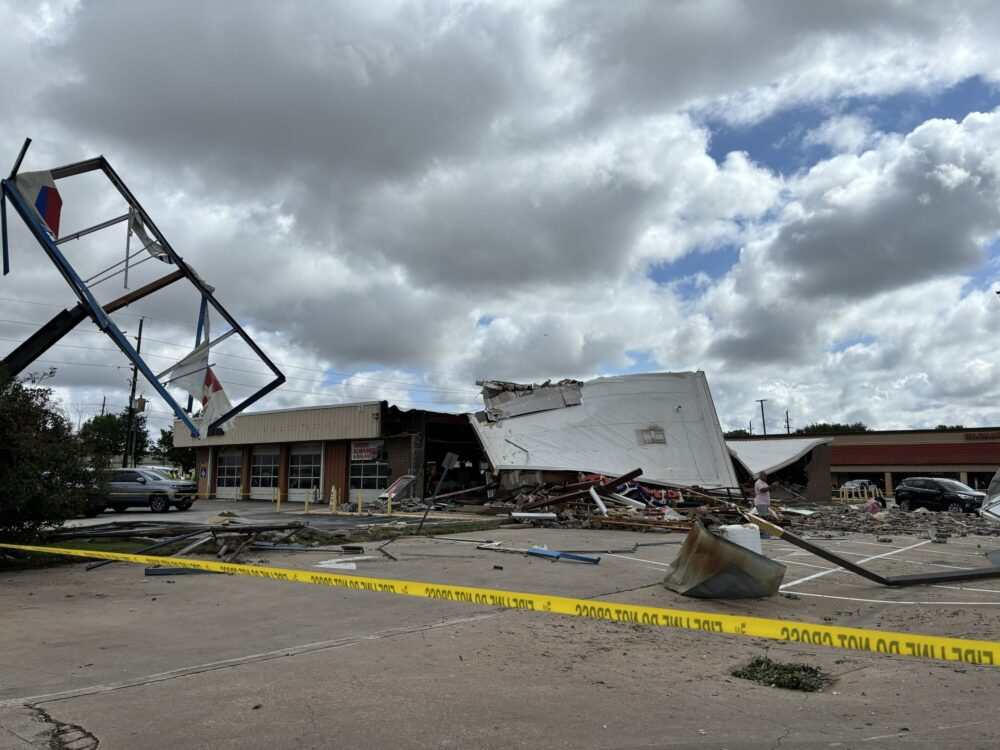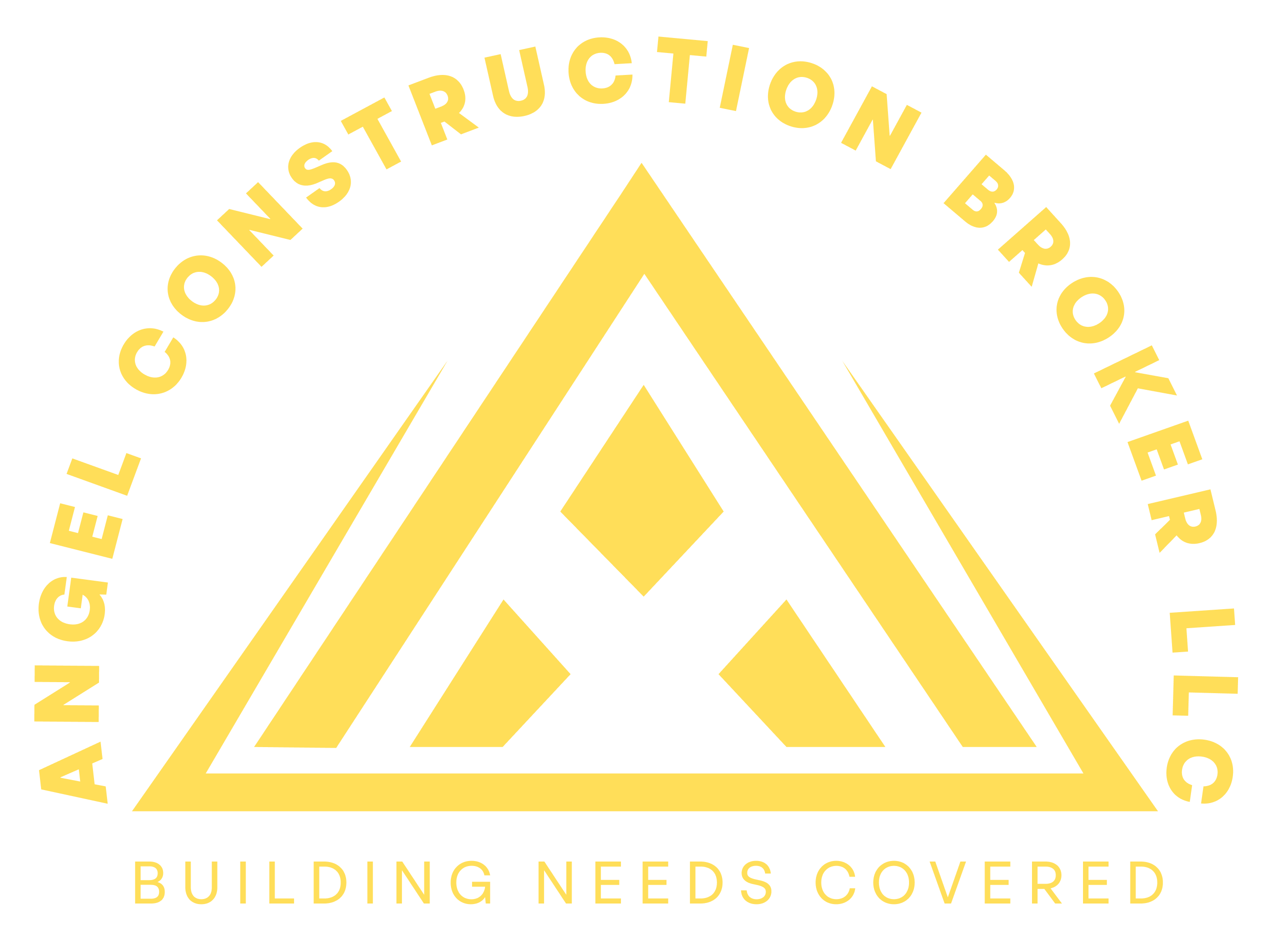Storm damage can come in many forms, often leaving homeowners and businesses scrambling for repairs. The most common types of storm damage include wind damage, which can rip off shingles and siding, and water damage from heavy rains that lead to flooding. Hail can dent roofs and cars, while lightning strikes might cause fires or power surges that damage electronics. Fallen trees and debris can also wreak havoc on property. Let’s dive into the specifics of each type of storm damage and Angel Construction Broker LLC tells how you can protect your property.
Wind Damage
Wind damage is one of the most prevalent types of storm damage, particularly during hurricanes, tornadoes, and severe thunderstorms. High winds can cause extensive damage to both the exterior and interior of buildings. One of the most common issues is the loss of roof shingles. When shingles are blown off, the roof becomes vulnerable to leaks, which can lead to water damage and structural issues. In severe cases, entire sections of the roof can be torn off, exposing the interior of the building to the elements.
Windows and doors are also at risk during high winds. Broken windows and doors can lead to further structural damage and allow rainwater to enter the building, causing additional water damage. To mitigate wind damage, it is essential to ensure that roofs are properly maintained, windows and doors are secured, and trees are regularly trimmed.
Water Damage
Water damage from storms is a widespread issue, especially in areas prone to heavy rainfall or flooding. Water damage can occur in several ways, including surface flooding, groundwater infiltration, and roof leaks. Flooding can cause extensive damage to the foundation, walls, and floors of buildings. It can also lead to mold growth, which poses health risks and can be challenging to remediate.
Basements are particularly susceptible to water damage during storms. Water can seep through cracks in the foundation or enter through windows and doors, leading to significant flooding and structural damage. To prevent water damage, it is crucial to ensure proper drainage around the property, maintain the roof, and seal any cracks or gaps in the foundation.
Hail Damage
Hailstorms can cause significant damage to buildings, vehicles, and vegetation. Hailstones vary in size, from small pellets to golf ball-sized chunks, and can fall at high speeds, causing considerable impact damage. Roofs are particularly vulnerable to hail damage. Hailstones can crack or puncture shingles, leading to leaks and further water damage. In severe cases, hail can cause structural damage to the roof, requiring extensive repairs or replacement.
Siding, windows, and doors can also suffer hail damage. Hail can dent or crack siding materials, break windows, and damage doors, compromising the building’s integrity and appearance. Vehicles left outside during a hailstorm can sustain dents, broken windows, and damaged paint. To protect against hail damage, it is advisable to install impact-resistant roofing materials, use storm shutters for windows, and park vehicles in a garage or covered area during storms.
Lightning Damage
Lightning strikes during storms can cause various types of damage, primarily through electrical surges and fires. When lightning strikes a building, it can travel through the electrical system, causing power surges that damage or destroy appliances, electronics, and wiring. These surges can lead to costly repairs and replacements and pose a fire hazard.

To protect against lightning damage, it is essential to install surge protectors on all electrical devices and consider installing a lightning rod system on the building. Lightning rods provide a direct path for lightning to follow to the ground, reducing the risk of fire and electrical damage.
Hurricane Damage
Hurricanes combine the destructive forces of high winds, heavy rainfall, and storm surges, making them one of the most dangerous types of storms. Coastal areas are particularly vulnerable to hurricane damage, but the effects can be felt far inland as well.
To protect against hurricane damage, it is essential to build structures to withstand high winds and flooding, use storm shutters for windows, and have an evacuation plan in place. Preparing in advance and taking immediate action when a hurricane is approaching can significantly reduce the potential for damage and loss.
Snow and Ice Damage
Winter storms can cause significant damage through heavy snow accumulation, ice dams, and freezing temperatures. Heavy snow can put excessive weight on roofs, leading to potential collapses, particularly in older buildings not designed to handle such loads. Flat roofs are especially vulnerable as the snow does not slide off and accumulates, increasing the risk.
Freezing temperatures can cause pipes to freeze and burst, leading to significant water damage. This is particularly common in uninsulated or poorly insulated areas of a building, such as basements, attics, and exterior walls. To mitigate snow and ice damage, it is essential to remove snow from roofs regularly, ensure proper insulation of pipes, and maintain heating systems to prevent freezing.
Debris Damage
Storms often generate flying debris, which can cause additional damage to structures, vehicles, and vegetation. High winds can turn everyday objects into dangerous projectiles. This includes tree limbs, outdoor furniture, signs, and other loose items that can be lifted and thrown with great force.
To minimize debris damage, it is crucial to secure or store loose items before a storm. Regularly trimming trees and removing dead branches can also reduce the risk of damage from falling limbs. Additionally, using impact-resistant materials for windows and doors can help protect against flying debris.
Thunderstorm Damage
Thunderstorms are common and can cause a variety of damages, including wind, hail, and lightning damage. The combination of these elements makes thunderstorms a frequent source of property damage. High winds can cause similar damage to that described in the wind damage section, while hail can lead to the issues outlined under hail damage.
To protect against thunderstorm damage, it is important to have a well-maintained roof, impact-resistant windows, and surge protectors for electrical devices. Additionally, staying indoors and away from windows during a thunderstorm can reduce the risk of injury from flying debris or lightning strikes.
Tornado Damage
Tornadoes are among the most destructive weather events, capable of causing widespread devastation in a matter of minutes. The intense winds of a tornado can reach speeds of over 300 miles per hour, causing total destruction of buildings, uprooting trees, and scattering debris over large areas.
To mitigate tornado damage, it is crucial to build structures that can withstand high winds and flying debris. Reinforced concrete, steel frames, and storm shelters can provide greater protection during a tornado. It is also essential to have an emergency plan in place, including designated safe areas and emergency supplies.
Coastal Erosion

Coastal areas are particularly vulnerable to storm damage due to the effects of high winds, storm surges, and heavy rainfall. Coastal erosion is a significant concern, as it can lead to the loss of land and damage to structures built near the shore. Storm surges, which are rises in sea level caused by the storm’s winds pushing water toward the shore, can inundate coastal areas, leading to severe flooding and erosion.
To combat coastal erosion, various measures can be implemented, including the construction of seawalls, groynes, and breakwaters to protect the shoreline. Beach nourishment, which involves adding sand or other materials to eroded beaches, can also help restore and protect coastal areas.
Blizzard Damage
Blizzards are severe winter storms characterized by strong winds, heavy snowfall, and low visibility. The combination of these factors can lead to dangerous conditions and significant damage. Heavy snowfall can accumulate rapidly, putting immense weight on roofs and causing structural damage or collapses.
To mitigate blizzard damage, it is essential to remove snow from roofs regularly, ensure proper insulation of pipes, and maintain heating systems to prevent freezing. Understanding these types of storm damage and taking preventive measures can help reduce the impact of severe weather events and protect property and lives.
Soil Erosion
Soil erosion is a common consequence of storms, particularly in areas with loose or bare soil. Heavy rainfall can cause significant runoff, which carries away the topsoil and leads to erosion. This not only reduces the fertility of the soil but also can destabilize the land, leading to landslides and other forms of land degradation.
To combat soil erosion, several measures can be implemented. Planting cover crops and maintaining vegetation can help hold the soil in place, reducing runoff. Installing terraces and other land management practices can also help reduce the speed and volume of water flow, minimizing erosion. In urban areas, proper drainage systems can help control water flow and reduce the risk of erosion.
Tree Damage
Storms can cause significant damage to trees, leading to both immediate hazards and long-term ecological impacts. High winds, heavy rain, and ice can break branches, uproot trees, and cause trees to fall on buildings, roads, and power lines. This not only poses immediate safety risks but also leads to power outages, road blockages, and property damage.
In forests and natural areas, storm damage to trees can disrupt ecosystems. Fallen trees and broken branches can alter habitats, affect wildlife, and increase the risk of forest fires by creating additional fuel. The loss of large trees can also reduce the forest canopy, impacting the local climate and reducing biodiversity.
Conclusion
In conclusion, while storms can bring about significant challenges and damage, being informed and proactive can make a world of difference. Whether it’s reinforcing your home’s structure, investing in storm-resistant materials, or having a plan for swift repairs, there are steps you can take to mitigate the impact of storm damage. Regular maintenance and staying alert to weather forecasts can also help you stay ahead of potential issues. By understanding the common types of storm damage and being prepared, you can better protect your property and ensure a quicker recovery should a storm strike. Stay safe and proactive in safeguarding your home or business from nature’s unpredictable forces.
